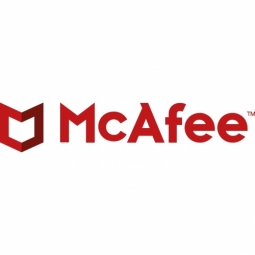公司规模
Large Corporate
地区
- America
国家
- United States
产品
- Skyhigh for Shadow IT
- Skyhigh for Office 365
- Microsoft Exchange Online
- Microsoft OneDrive
技术栈
- Cloud Services
- Data Loss Prevention (DLP)
- HIPAA Compliance
实施规模
- Enterprise-wide Deployment
影响指标
- Cost Savings
- Productivity Improvements
- Customer Satisfaction
技术
- 网络安全和隐私 - 云安全
- 网络安全和隐私 - 数据库安全
- 网络安全和隐私 - 安全合规
适用行业
- 医疗保健和医院
适用功能
- 商业运营
用例
- 网络安全
- 远程协作
服务
- 云规划/设计/实施服务
- 网络安全服务
关于客户
Adventist Health System 是一个拥有 45 家医院的医疗保健网络。该组织总部位于佛罗里达州阿尔塔蒙特斯普林斯。作为医疗保健提供商,Adventist Health System 必须遵守严格的 HIPAA 合规要求以保护个人健康信息。该组织拥有超过 70,000 名员工,年收入达 76 亿美元。在一项将所有用户从传统的本地 Microsoft Exchange 系统迁移到 Exchange Online 的大型计划中,除了电子邮件之外,他们还获得了额外的 Office 365 机会和服务。
挑战
基督复临安息日会医疗系统 (Adventist Health System) 是一家拥有 45 家医院的医疗保健网络,它面临着执行严格的 HIPAA 合规性要求以保护个人健康信息的挑战。在将所有用户从传统的本地 Microsoft Exchange 系统迁移到 Exchange Online 的大型计划中,除了电子邮件之外,他们还获得了额外的 Office 365 机会和服务。OneDrive 是提供给用户的增值服务之一,这让他们有理由考虑他们的安全性、合规性和风险,不仅是针对 Office 365,而是针对所有云服务。他们缺乏对云服务提供商的可见性,需要为从本地 Exchange 迁移到基于云的 Office 365 的 70,000 多名用户提供额外的安全控制。
解决方案
Adventist Health System 实施了 Skyhigh for Shadow IT,以了解当前的云使用情况。他们发现整个组织使用了 2,000 多种云服务。Adventist Health System 的团队首先从 Skyhigh 运行有关正在使用的云服务类别的报告,首先是文件共享提供商;然后是社交媒体和协作提供商。这种可见性提供了开始管理可接受使用政策所需的信息,通过粗略级别阻止和即时教育相结合,利用组织的防火墙和代理。这些努力的目标是指导用户远离未经批准的文件共享服务,并引导他们遵循企业标准,即 Office 365 和 OneDrive。一旦控制了 Shadow IT 的使用,下一步就是围绕其批准的云服务(例如 Office 365)实施安全、合规和治理政策。作为一家大型医疗保健组织,Adventist Health System 的团队必须确切了解他们的数据流向何处,以确保符合 HIPAA 和 HITECH。
运营影响
数量效益

Case Study missing?
Start adding your own!
Register with your work email and create a new case study profile for your business.
相关案例.

Case Study
Hospital Inventory Management
The hospital supply chain team is responsible for ensuring that the right medical supplies are readily available to clinicians when and where needed, and to do so in the most efficient manner possible. However, many of the systems and processes in use at the cancer center for supply chain management were not best suited to support these goals. Barcoding technology, a commonly used method for inventory management of medical supplies, is labor intensive, time consuming, does not provide real-time visibility into inventory levels and can be prone to error. Consequently, the lack of accurate and real-time visibility into inventory levels across multiple supply rooms in multiple hospital facilities creates additional inefficiency in the system causing over-ordering, hoarding, and wasted supplies. Other sources of waste and cost were also identified as candidates for improvement. Existing systems and processes did not provide adequate security for high-cost inventory within the hospital, which was another driver of cost. A lack of visibility into expiration dates for supplies resulted in supplies being wasted due to past expiry dates. Storage of supplies was also a key consideration given the location of the cancer center’s facilities in a dense urban setting, where space is always at a premium. In order to address the challenges outlined above, the hospital sought a solution that would provide real-time inventory information with high levels of accuracy, reduce the level of manual effort required and enable data driven decision making to ensure that the right supplies were readily available to clinicians in the right location at the right time.

Case Study
Gas Pipeline Monitoring System for Hospitals
This system integrator focuses on providing centralized gas pipeline monitoring systems for hospitals. The service they provide makes it possible for hospitals to reduce both maintenance and labor costs. Since hospitals may not have an existing network suitable for this type of system, GPRS communication provides an easy and ready-to-use solution for remote, distributed monitoring systems System Requirements - GPRS communication - Seamless connection with SCADA software - Simple, front-end control capability - Expandable I/O channels - Combine AI, DI, and DO channels

Case Study
Driving Digital Transformations for Vitro Diagnostic Medical Devices
Diagnostic devices play a vital role in helping to improve healthcare delivery. In fact, an estimated 60 percent of the world’s medical decisions are made with support from in vitrodiagnostics (IVD) solutions, such as those provided by Roche Diagnostics, an industry leader. As the demand for medical diagnostic services grows rapidly in hospitals and clinics across China, so does the market for IVD solutions. In addition, the typically high cost of these diagnostic devices means that comprehensive post-sales services are needed. Wanteed to improve three portions of thr IVD:1. Remotely monitor and manage IVD devices as fixed assets.2. Optimizing device availability with predictive maintenance.3. Recommending the best IVD solution for a customer’s needs.

Case Study
HaemoCloud Global Blood Management System
1) Deliver a connected digital product system to protect and increase the differentiated value of Haemonetics blood and plasma solutions. 2) Improve patient outcomes by increasing the efficiency of blood supply flows. 3) Navigate and satisfy a complex web of global regulatory compliance requirements. 4) Reduce costly and labor-intensive maintenance procedures.

Case Study
Cloud-based healthcare solution for Royal Philips
Royal Philips wanted to launch its cloud-based healthcare solution HealthSuite Digital Platform in China to deliver services to help cope with challenges related to urbanization and population growth. Philips wanted to achieve this goal by combining mobile, cloud computing and big data technologies. To bring this platform and product to market, Philips required cloud computing and local technical service capabilities in China, in addition to a flexible IT infrastructure that could handle user requests.








